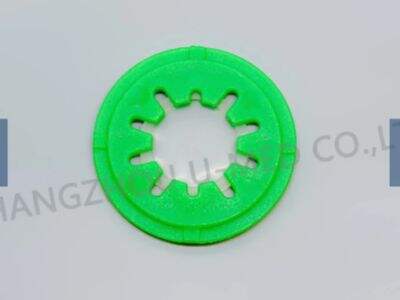If you have ever gone to a doctor or had treated in the hospital, then you might have seen an IV bag. An IV bag is a specialized bag filled with crucial medicine or fluids required by patients. The bag is linked to a long tube, which runs through a needle inserted into the body —usually in a vein. It is often used to dispense medicine when a patient cannot take it orally.
Another small but oh-so-critical tool is a roller clamp for your IV lines. It is the IV roller clamp that regulate rate of medicine or fluid into the body. Think of it as the faucet at home, in this case you regulates how much water comes out when you wash your hands or filling up a glass. Using the adjustable roller clamp, health care workers can regulate the amount of medicine or fluid a patient receives and how fast it goes into their system.
Why IV Roller Clamps Matter
Though not common in medical articles, proper use of IV roller clamps is essential to ensure patient safety and comfort. Moreover, these clamps used by healthcare workers prove the right dose of medicine to patients which is a correct amount they require. To achieve this, the health care worker initially determines how much medicine is needed, which can be based on a per unit measure such as patient weight or age or individual need.
Once they determine the proper dose, they then administer that medication via an IV roller clamp all at the appropriate rate and for the correct duration of time. All this hard work must be done with care so that patients can feel good and recovery, quickly.
Checking the IV roller clamp is equally important to ensure it functions well. The clamp only squashes the blood less than it should, and too much or too little medicine is delivered; this can be extremely dangerous. To prevent errors, health-care workers are trained to frequently check the clamp.
How to Make Infusion Therapy Comfortable and Secure
The process of giving medication or fluids through an IV is known as infusión therapy. It's sometimes a bit uncomfortable—and even slightly painful—for patients to be given medicine in that way. Which is why it is essential to make this experience as light as possible on them.
IV roller clamps make the process more comfortable by enabling healthcare workers to adjust the flow of the medicine or fluid. That allows them to ensure the drug enters a patients body at a tactile and safe rate.
Not only does this equipment assist in making the process as comfortable as possible, but it ensures the patients are safe as well. They help avoid overdosing or exposing patients to low levels of medicine, which is critical for those being treated for complex diseases.
Home uses of IV Roller Clamp
Home Infusion TherapySome patients get their infusion therapy in their home rather than in the hospital or healthcare facility. While this can be more convenient for them, it also means IV roller clamps are even higher in demand. They ensure safe and comfortable receptions of medicine or fluid at home for the patient in the correct dose.
When patients are treated at home, their health professional typically provides instructions on correctly using the IV roller clamp; This is very important. For example, regular checks of the clamp is there to keep it functional or positioning it into a right position. Patients must also follow these instructions closely so they can receive the appropriate treatment, while remaining safe.
Training Health Workers to Use IV Roller Clamps
Healthcare workers can be trained well in using IV roller clamps, but the same may not be the case in hospitals or clinical settings. This training helps them make sure that patients are getting the right amount of medicine or fluid. Which means it must also recognize if there is a problem with the IV roller clamp and respond accordingly.
Healthcare Workers must aware of how to maintain the roller clamp of IV so that rate medicine will be administrated. It can be learned over time, but it takes practice.

 EN
EN
 AR
AR BG
BG HR
HR CS
CS DA
DA NL
NL FI
FI FR
FR DE
DE EL
EL HI
HI IT
IT JA
JA KO
KO NO
NO PL
PL PT
PT RO
RO RU
RU ES
ES SV
SV TL
TL ID
ID LT
LT UK
UK VI
VI HU
HU TH
TH TR
TR AF
AF MS
MS GA
GA HY
HY BN
BN LO
LO LA
LA NE
NE KK
KK